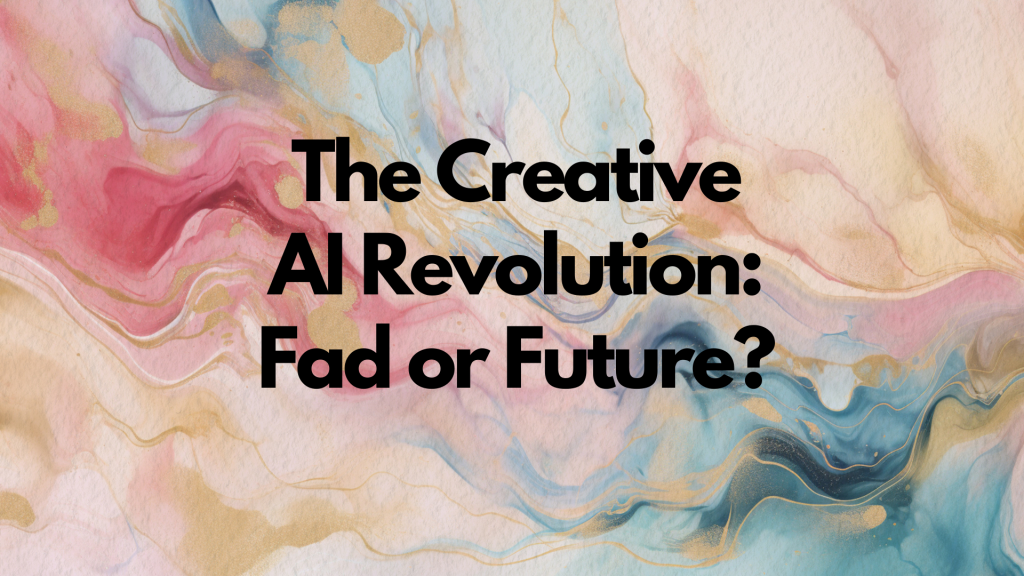
Think AI is only good at crunching numbers? Think again. Generative AI is mastering imagination in mind-blowing ways.The robots are getting creative. We explore the rise of uncannily artistic generative AI models like DALL-E 2 and GPT-3.AI that writes, draws, and composes? The stunning creative power of futuristic generative algorithms.Generative AI, a subset of artificial intelligence, has transformed the digital landscape. First AI beat us at games, now it wants to be an artist too. We dive into the world of creativity-mimicking generative AI.It goes beyond mere predictions and classifications, allowing machines to create entirely new content, whether it’s art, music, text, or even data patterns.
💡 **How Does It Work?**
At the heart of generative AI are models like GANs (Generative Adversarial Networks). A GAN consists of two neural networks: a generator that produces data, and a discriminator that evaluates it. They work together, constantly refining until the output is indistinguishable from real data.
🎨 **Applications in Art & Music**:
1. **Art**: AI can generate unique artwork or even recreate styles of famous artists.
2. **Music**: Generative models can produce novel tunes, assisting or even composing full music pieces.
📝 **Natural Language Processing (NLP)**:
With tools like OpenAI’s GPT series, generative AI can write essays, stories, and even code. It’s revolutionizing content creation, making it more accessible and diverse.
🕹 **Gaming & Virtual Worlds**:
Generative AI can craft vast, immersive virtual landscapes and develop unique game scenarios, adding depth and variation to the gaming experience.
🔮 **Future Possibilities**:
As the technology matures, we might see more personalized content, ranging from bespoke fashion designs to individualized movies or even generated research hypotheses. The potential is staggering!
🚫 **Challenges and Concerns**:
1. **Ethical dilemmas**: Can a machine-created artwork be copyrighted? Who owns it?
2. **Misuse**: Generating misleading information or deepfakes can have severe implications.
3. **Job displacement**: As AI takes over creative tasks, it raises concerns over job security in certain sectors.
**1. The Mechanics Behind Generative AI:**
Generative AI primarily relies on models like Generative Adversarial Networks (GANs). Here’s a more detailed breakdown:
– **Generator**: This neural network creates new data instances. It starts with random noise and iteratively refines its output.
– **Discriminator**: It’s a critic, determining whether a given data instance seems like it comes from the actual dataset or the generator.
Over time, the generator becomes adept at producing data that the discriminator can’t distinguish from real data. The interplay is analogous to a forger trying to create a painting, with the discriminator acting as the art detective.
**2. Applications in Different Domains:**
– **Art**: Beyond replicating styles, Generative AI has been utilized in exhibitions and has even been auctioned at renowned venues like Christie’s.
– **Music**: Generative models can not only produce tunes but can also collaborate with human composers to produce symphonies or introduce exotic instrumental nuances.
– **NLP**: Beyond content creation, Generative AI aids in dialogue systems, improves recommendation systems, and enhances user experiences by personalizing content.
– **Gaming**: AI-driven NPCs (Non-Player Characters) can provide more challenging and adaptive gameplay experiences. Virtual worlds can be vast and ever-changing, providing players with unique experiences each time they log in.
**3. The Future Landscape:**
– **Personalized Content**: Imagine movies where the storyline adapts based on your preferences or books that change genres as per your mood.
– **Research and Development**: Generative models might propose novel scientific hypotheses or design new molecules for drug development.
– **Education**: Custom-tailored learning materials and experiences can be generated for individual students, optimizing the learning curve.
**4. Ethical and Societal Impacts:**
– **Authenticity and Ownership**: With AI creating art or music, the lines blur around originality. What does it mean for traditional artists? How do we value AI-generated vs. human-created content?
– **Misuse**: Deepfakes are a rising concern. They are video forgeries that can make people appear to say or do things they didn’t. This has significant implications for misinformation, privacy, and security.
– **Economic Impact**: As AI systems take on tasks previously reserved for humans, there’s a valid concern over job losses in certain sectors, especially those that rely heavily on creativity.
Generative AI is a transformative force, reshaping how we perceive machine capabilities. As we stand on the cusp of this technological frontier, it’s imperative to approach its capabilities with both enthusiasm and caution, ensuring that we harness its potential in ethical and beneficial ways.
In conclusion, generative AI is a testament to the monumental leaps we’ve made in the realm of machine learning. It offers a blend of science and creativity, paving the way for countless innovations. As with any powerful tool, it’s crucial to use it responsibly and understand its implications.